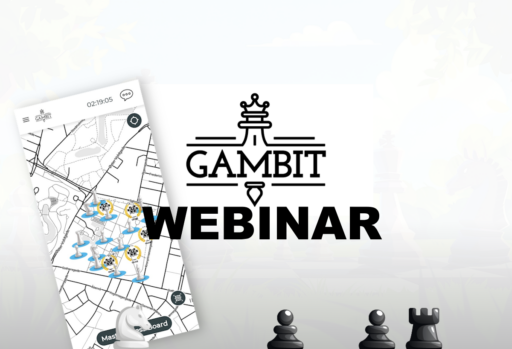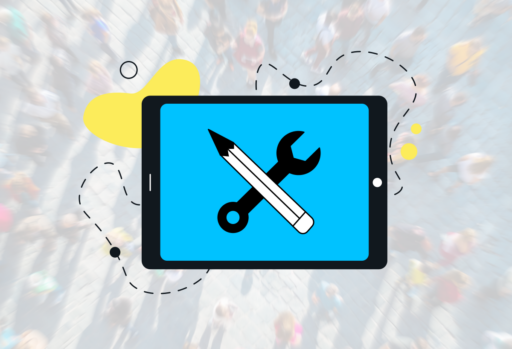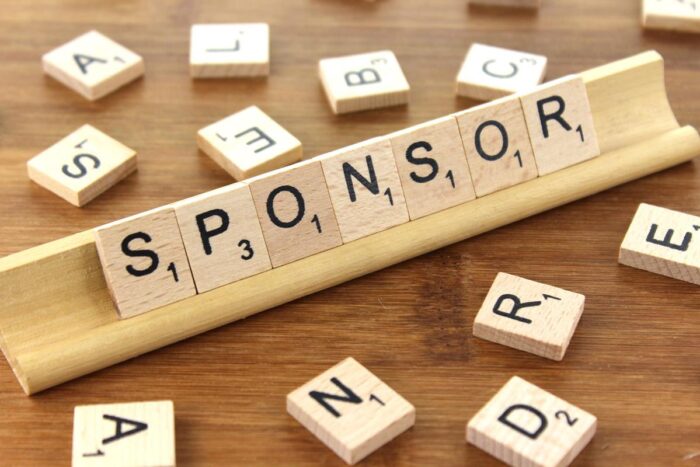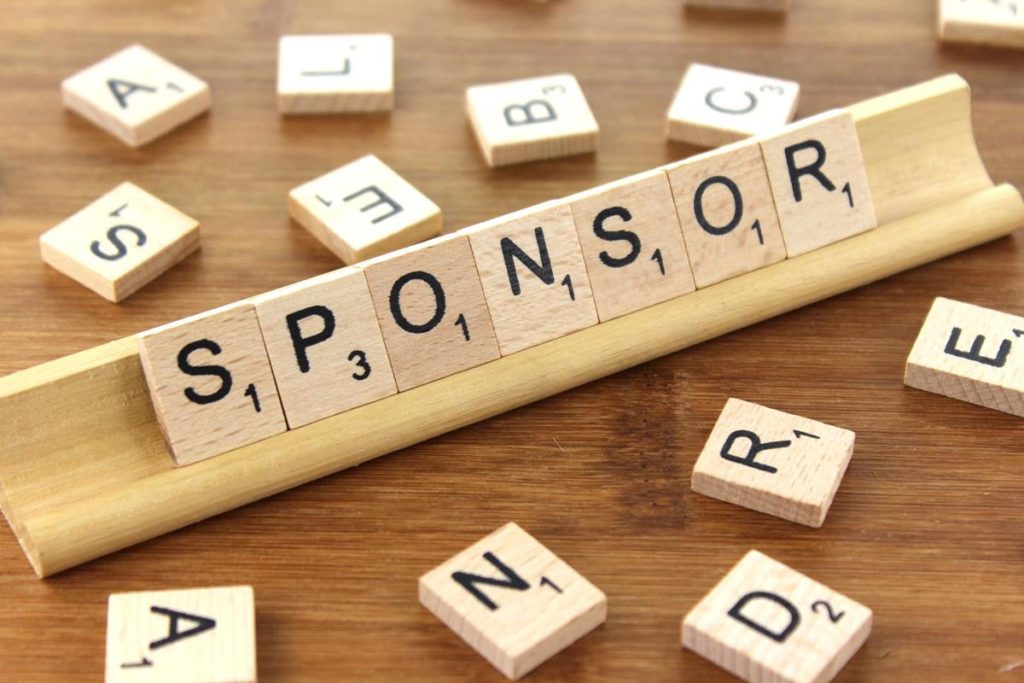Did you know? About 75% of event sponsors are on a constant look-out for new partnerships. Moreover, IEG forecasted a 4.5% increase in sponsorship spending in 2017, growing from $60.1 billion in 2016 to a whopping $62.8 billion. That’s a lot of money to go around.
But how do you get a slice of the pie as an event professional?
While getting new sponsors is easier said than done, we have a few cool ideas that might just grab the attention of big corporate backers to your festival or exhibition. Let’s check them out!
Polish Your Sponsorship Proposal
Without a well-written proposal, getting a potential sponsor on-board becomes near impossible. This document should speak for you – communicate your event’s value, disable potential objections, and move the needle closer to that coveted meeting where you can work your magic!
But before we dive into the do’s, let’s have a quick discussion of what you should not do in your proposal.
First on the list:
Don’t start with the history of the event.
Make the proposal about them instead of you. The number of years the event has under its belt nor the grand vision the organizers have in mind won’t interest them – unless you can show through relevant data that you can deliver the bang for the bucks they invested.
Next, don’t appeal to their kindness.
Sure, you may find companies with unyielding philanthropy who will support your cause without expecting anything in return. But they are far and few in between.
You see, sponsoring a conference, festival, or exhibit is a business decision. One where they expect to gain tangible benefits. So instead of appealing to their kindness, show what’s in it for them.
And last but not the least:
Don’t overwhelm the reader.
A 24-page overview of your event is not only intimidating, but whoever gets the document is likely to skim through it and miss important points. Focus on telling the reader what they want to hear instead of giving a comprehensive rundown.
With the don’ts out of the way, here are the 4 must-haves for your proposal.
Personalized Benefits
A generic pitch does your event more harm than good. Nobody wants to be treated as simply another prospect in the pipeline. To personalize your pitch and highlight the specific benefits your event can bring, you need to do a lot of research.
Check out their most recent press releases. Maybe the prospect has just released a product or are trying to build an public image that would resonate with your audience.
Look at their LinkedIn page and anything that comes up on Google. You want to keep an eye on their target demographic and their current concerns. Getting a pulse on industry trends may also give you creative ideas for providing value to a potential sponsor.
You will want to do this for every prospective sponsor to increase your chances of landing the deal. Doing so will take a lot of time for sure. But remember, anything worth doing is worth doing well!
Relevant Numbers
You’ve personalized your pitch and showcased specific benefits they can get out of your event. But the proof is in the pudding and you need to show the right numbers to back-up your claims.
Here are a few ideas to get you started:
- Show how you plan to use their investment. Whether you’re asking for $500, $1,000, or even $10,000, the sponsor would like to know where their money will go.
- Help potential sponsors understand your audience. You want to present how many people are attending your event and that they’re the right people for the prospective sponsor. Include your main demographic so sponsors can easily see if their target customers are represented in your show.
- You also want to explain how you can help them reach your attendees – in numbers. Sure, on-site banners and logos are still useful. But providing exposure – which is what events promise to sponsors – has become so much more than simply uploading a banner to a registration website. Social media engagement, CTR, and email open-rates are just some of the metrics that govern today’s marketing world.
Strong Call To Action
Your proposal was a hit, convincing your prospect of your event’s value. But now what!? Marketing executives are working on a tight schedule, and you don’t want to leave their next action to chance.
Whether you want the reader to call, email, or set up a meeting with you, be sure to add an appropriate and strong call to action in your proposal. Type it in bold letters for good measure so they won’t miss it.
You’ve done a lot of work in winning over the prospect, and you want to make that count!
“Up” Your Social Media Game
Here’s another interesting tidbit from IEG’s 2017 global sponsorship report:
Only 2% of sponsors don’t use social media for activation, while 98% cite social media as one of their primary channels in leveraging partnerships.
With this statistic in mind, we can reason that prospective sponsors will gauge your event’s success and decide if they will work with you based on your social media presence. They are most likely to ask:
- Do you have enough followers?
- How are they engaging with you on Twitter or Facebook?
- Do you regularly provide content and updates?
- Are you connected to their ideal users?
While not infallible, these questions can help potential sponsors judge if you can bring enough people and exposure to justify their investment.
Chances are, you’re already familiar with how the major social networks work. But if you need a quick refresher, the following best practices will help you grow your social following and engagement, making you a worthwhile partner for corporate sponsors.
Use Twitter To Raise Awareness About Your Event
Raising awareness about your event via Twitter starts with the hashtag. You want to create one that’s short, intelligible, memorable, and unique for your event. And most important, you should use the hashtag for all of your marketing and promotional materials.
Take note, however:
Tweeting nonstop about your upcoming event can be annoying and may come across as a hard sell. Try to mix things up. Showcase the sponsors, speakers, and big names in attendance. Involve your followers in planning the event by asking questions via Twitter.
On the other hand, you don’t want to be the only one tweeting out your hashtag!
So to encourage other people to join the act and spread the word about your event, consider throwing a Twitter contest that require participants to use the event’s hashtag to enter.
Oh! And don’t forget to ask your followers for a simple retweet. It can work wonders.
Use Facebook To Gather Your Fans In One Place
With 1.94 billion monthly active users, Facebook has to be one of the most powerful and far-reaching platforms for marketing your event. And the best part? You can build a fan page specifically for your event.
From here, you can create a “Facebook Event” within the page, handy for building a fanbase for annual conferences, tradeshows, and other recurring events.
If you have a large enough marketing budget, you can even buy Facebook ads to reach users outside of your network. And in case you didn’t know, the targeting capabilities of Facebook are second to none – encompassing everything from age, gender, location, to interests and current life events!
Build Relationships With Prospective Sponsors
Sending a well-written sponsorship letter is a step in the right direction. But you know what’s better? Sending that proposal to a decision-maker with whom you have an existing relationship. And social media can help you do just that!
Twitter, Facebook, and the other networks can be excellent platforms for gathering your event’s fans and creating buzz. However, these networks can also bring you a step closer to the right sponsor.
Warm them up by retweeting their posts or sharing on Facebook. If they hold Twitter chats, consider jumping in to offer an insight or two. If they have a blog, leaving a comment – one that encourages meaning conversations – can leave a lasting positive impression.
And one last reminder:
Don’t just follow businesses. Follow people instead.
Check out the LinkedIn pages of companies that can be a good fit for your event. Look for key decision-makers that can help you land that sponsorship deal. In particular, people from the marketing department can be a good place to start.
Offer Unique And Useful Activation Ideas
Brand activation is the process of establishing long-term connections and driving consumer action through interaction and experiences.
A solid brand activation idea is worth its weight in gold for many reasons. For starters, it helps sponsors strengthen connections with consumers while offering excellent opportunities to showcase their products or services.
If you can include relevant and specific activation ideas in your pitch, you’ll be much closer to that sweet yes. But what activation ideas should you consider? Here are a few suggestions to get you started.
Upgraded Photo Booth
Once upon a time, photo booths – complete with masks, hats, and fake mustaches – were a lot of fun. Today, they’re nothing special.
However, photo booths can be interesting if you throw in the right elements into the mix. What about commercial-grade costumes and a professional photographer? Now that’s going to pull in crowds for sure!
If a potential sponsor is looking to transform its public image and connect with the hip and young, this refined approach to the overused photo booth can be an excellent activation idea.
Event Gamification
Gamification refers to the addition of game elements (completion bars, points, badges, etc.) to a serious environment like, say, a meeting or a workshop.
For over 63% of event planners, gamification was a mainstay in their arsenal of activation tactics. Why? Because gamification, when done right, can lead to a 100% to 150% increase in engagement. However, gamifying an event for the sake of gamification isn’t a good idea.
For example:
An iPad scavenger hunt may be fun. But for encouraging people to learn more about a sponsor’s solutions and services, such an approach backfires more often than not. Participants are more likely to go after the iPad than genuinely connect with the sponsor.
So before adding gamification to your sponsorship proposal, you should map out the KPIs ahead of time. Think about what you and the potential sponsor would like to achieve in the event – including the behaviors you’d want to trigger and how to measure your results.
Charging Stations
Smartphones are ubiquitous, and you can bet event attendees would need to recharge their batteries at some point.
So why not have a company sponsor the charging stations!?
This idea may not be as fun as the other ideas in this short list, but charging stations can be a valuable activation idea for the right sponsor. You can give out branded portable power banks or erect multiple charging hubs within the venue.
And to make it worthwhile for the sponsor, you can require users to handover their email address (or tap their RFID with personal details) as a form of payment.
Relaxation Lounge And Sampling Station
At a bustling exhibit or summit, attendees will want to slow down and chill out. And sponsors can leave a lasting positive impression by lending attendees some space on the couch to unwind! If your potential sponsor is in the food and beverage sector, you can land a double-whammy by adding a sampling station and RFID to capture leads in a tap.
Guests get to relax and enjoy free refreshments. The sponsor gets a lot of leads while putting their products in front of a potentially new audience. A win-win!
Virtual Reality Tour And Games
Virtual reality has been the talk of the town for many years. And while we’re yet to see mass-market products take advantage of the technology, brands were quick on the uptake. United Airlines, for example, uses VR tours to showcase their business class offerings.
Sure, this activation idea takes a lot of technical expertise. But for sponsors in “show don’t tell” industries (ex: travel, entertainment, hospitality), virtual reality tours and games can provide that immersive experience attendees can connect to.
Conclusion
Global sponsorship spending is growing, but so are expectations. Gone are the days when a generic proposal and the promise of exposure can land you a sweet sponsorship deal. However, with the ideas and tactics outlined above, you can tip the balance in your favor and grow your event’s revenue.
About the author
 Mark Kao is the department manager of COSRental – an event and conference equipment hire company. Passionate about all things #eventtech and #digitalmarketing, Mark has taken part in his fair share of trade shows and is always ready to share his knowledge and experience.
Mark Kao is the department manager of COSRental – an event and conference equipment hire company. Passionate about all things #eventtech and #digitalmarketing, Mark has taken part in his fair share of trade shows and is always ready to share his knowledge and experience.
Related stories

Are you looking for the perfect team-building activity? Look no further! We’re excited to introduce GAMBIT, a new team-building game...

Playing games is fun, but creating games is even better. What if you generate a profit from your own game...

I might surprise you with the following statement, but I consider that testing is even more important than development. Look...
Start free trial to bring your ideas to life
Sign up and create games, tours, team events and educational content that captures peoples' attention
Start from the scratch or use templates to kickstart!

